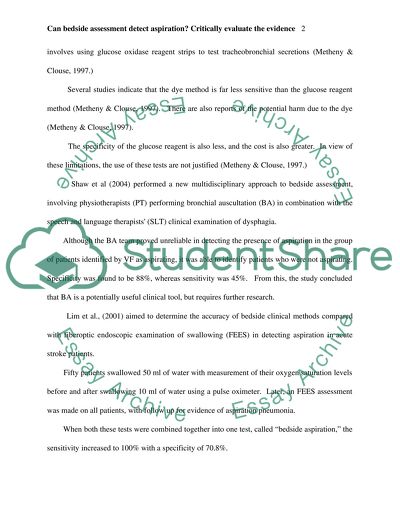Cite this document
(“Can Bedside Assessment Detect Aspiration Essay Example | Topics and Well Written Essays - 2000 words”, n.d.)
Can Bedside Assessment Detect Aspiration Essay Example | Topics and Well Written Essays - 2000 words. Retrieved from https://studentshare.org/health-sciences-medicine/1538467-can-bedside-assessment-detect-aspiration
Can Bedside Assessment Detect Aspiration Essay Example | Topics and Well Written Essays - 2000 words. Retrieved from https://studentshare.org/health-sciences-medicine/1538467-can-bedside-assessment-detect-aspiration
(Can Bedside Assessment Detect Aspiration Essay Example | Topics and Well Written Essays - 2000 Words)
Can Bedside Assessment Detect Aspiration Essay Example | Topics and Well Written Essays - 2000 Words. https://studentshare.org/health-sciences-medicine/1538467-can-bedside-assessment-detect-aspiration.
Can Bedside Assessment Detect Aspiration Essay Example | Topics and Well Written Essays - 2000 Words. https://studentshare.org/health-sciences-medicine/1538467-can-bedside-assessment-detect-aspiration.
“Can Bedside Assessment Detect Aspiration Essay Example | Topics and Well Written Essays - 2000 Words”, n.d. https://studentshare.org/health-sciences-medicine/1538467-can-bedside-assessment-detect-aspiration.


